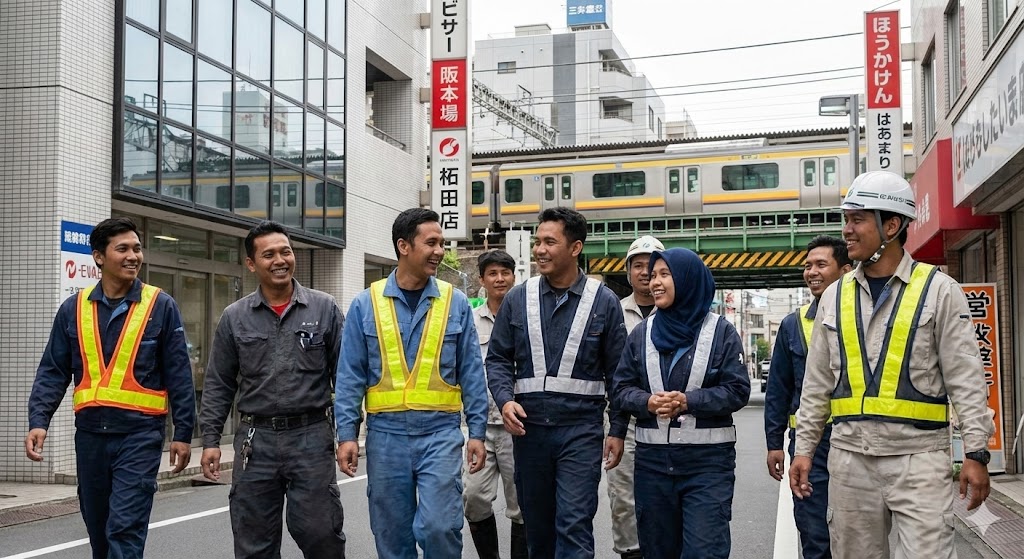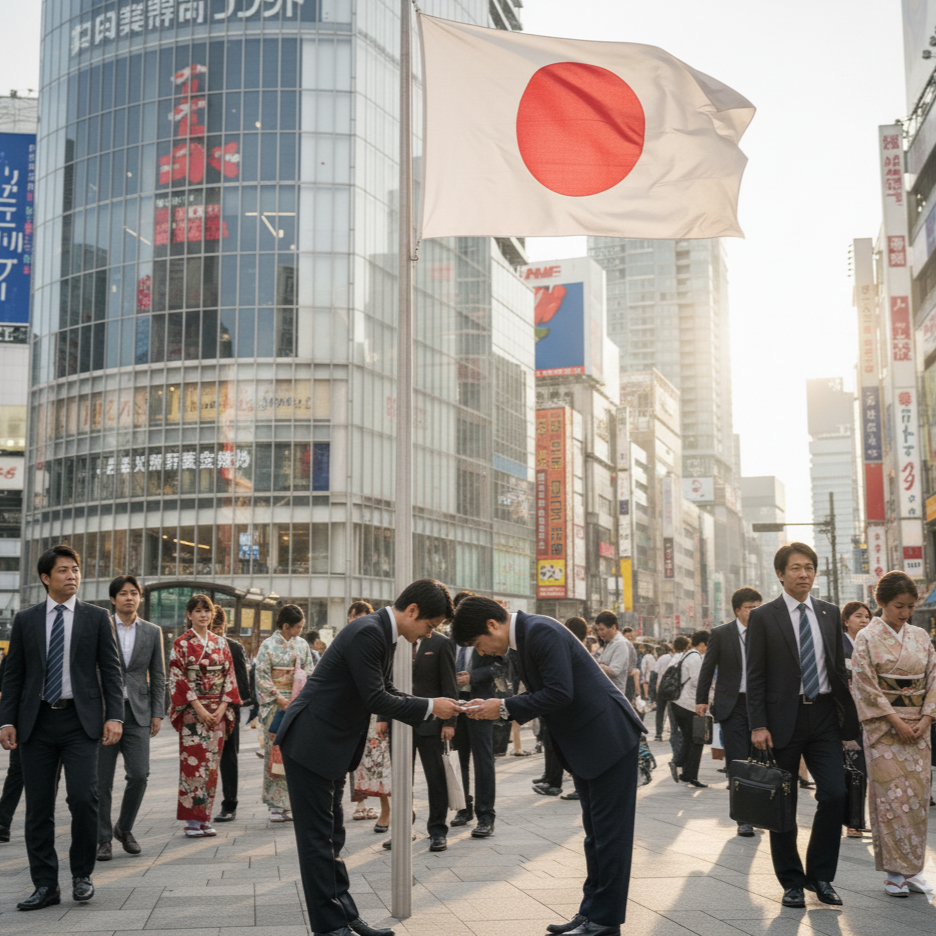How to Work in Japan 2025: Requirements, Pathways, & Process

Working in the Land of Sakura is still the ultimate dream for thousands of Indonesian workers. With competitive salaries, a disciplined work environment, and a rich culture, interest in working in Japan is predicted to continue to increase by 2025.
However, behind these great opportunities, there are difficulties regarding work requirements and pathways that must be understood by job seekers. This article is a comprehensive guide for you.
We'll cover everything you need to know about working in Japan, from the latest requirements, to a comparison of departure paths, to tips on obtaining departure documents.
Check out the complete guide below.
Getting to know the 2025 Japan Job Pathway

The first thing you must understand before discussing the fees or application techniques is the departure path. The Japanese government provides several different visa schemes depending on your qualifications and destination.
Based on industry data and the latest regulations, here are the 5 main pathways to work in Japan that you need to know:
-
Specified Skilled Worker SSW) or Tokutei Ginou pathway
This is the program that will be excellent in 2025. Workabroad.id explains that the SSW Program was launched specifically by the Japanese government to overcome the labor shortage crisis in various vital industrial sectors. Unlike an apprenticeship, SSW visa holders are legally recognized as professional workers with rights and salaries equivalent to Japanese.
The program is divided into two main categories. The first is SSW Type 1, which is aimed at workers with basic skills in 14 industrial sectors (such as hospitality, agriculture, and manufacturing) with a work duration of up to 5 years but are not allowed to bring their families. The second is SSW Type 2, an advanced level for highly skilled workers that allows for indefinite visa extension and family stay in Japan.
-
Technical Intern Training Program (TITP) or Internship Pathway
Many prospective workers still equate internships with full-time work, even though the two are different. As reported by Workabroad.id, the Internship Program or known as the Technical Intern Training Program (TITP) is actually intended to provide practical skills training to foreigners. The goal is to transfer technology so that participants can develop their country after returning home.
The duration of this internship program generally runs for 3 to 5 years. During this period, your status is that of atrainee, not a full-fledged worker, which sometimes results in certain rights being restricted compared to formal workers. However, the good news is that after completing the internship program, participants have a great opportunity to return to work in Japan with a higher status through the SSW or Tokutei Ginou pathway.
-
Government Pathway
This pathway is often the first option looked at because of the direct involvement of the government. Quoting information from Dealls, the Government to Government (G to G) scheme is a form of official cooperation between the Government of Indonesia through the Ministry of Manpower (Kemnaker) and the International Manpower Development Organization Japan (IM-Japan).
While this route offers a high degree of certainty, you need to prepare yourself for the intense competition. The recruitment process is generally only conducted once a year with thousands of applicants from all over Indonesia. Therefore, preparation for the selection must be done in advance as the limited quota often makes many candidates drop out at an early stage.
-
Independent Pathway
There is a more flexible route called Personal Registration (Mandiri), where candidates search and apply for jobs directly through online platforms or professional networks. Once accepted, they arrange the Certificate of Eligibility (CoE) and visa documents independently. This path is usually taken by those applying for Engineer visas or ex-apprentices who already have strong connections with Japanese companies. -
Job Training Institution (LPK) Pathway
For most candidates, the route through an Authorized Employment Distributor or Job Training Institution (LPK) is a safer and more targeted option. Through this route, prospective workers register at an official institution that has collaborated with Japanese companies (Accepting Organization).
LPK not only distributes, but also provides Japanese language training and technical skills needed, as well as facilitates the administration of visa processing to job placement, so the risk of fraud or failure to depart can be minimized.
Requirements for Working in Japan 2025
Referring to the standards of Prospective Indonesian Migrant Workers (CPMI) quoted from the Talent Indonesia website, here are 6 main requirements that must be met by prospective candidates before applying for work to Japan:
- Minimum Age 18 Years. By law, prospective workers must be at least 18 years old at the time of application or departure.
- Minimum high school education/equivalent. The minimum diploma accepted is generally high school, vocational school, or equivalent (Madrasah Aliyah/Paket C).
- Pass the Japanese Language & Competency Test. You must have a Japanese language proficiency certificate, generally JLPT N4 or JFT-Basic A2 level.
- Physical and Spiritual Health. Candidates will be required to have a Medical Check-Up (MCU) at an accredited clinic or hospital for overseas visas.
- Social Security Participation. As a form of state protection, prospective Indonesian Migrant Workers (CPMI) must be registered in social security.
- Complete Documents. Make sure your documents are authentic and the data is synchronized. Mandatory documents include: e-KTP and Family Card (KK), Birth Certificate, Last Education Certificate, Valid Passport (at least 6 months remaining validity period when applying for visa), and Parent/Guardian/Husband/Wife Permission Letter (Required and signed on stamp duty).
Process after being accepted to work in Japan

Many candidates think that they can work immediately after passing the interview with the user. In fact, there is a crucial administrative phase that must be passed to ensure your legality as a foreign worker.
Based on information from workabroad.id, here are the 4 main stages you will go through after being accepted:
-
Medical Check Up (MCU) Stage
The first step that must be done is the final stage of the medical check-up. Unlike the initial health check, this MCU aims to ensure your physical condition is truly "Fit to Work" before the documents are submitted to immigration. -
Stages of Signing the Employment Contract
After being declared healthy, you will enter the stage of signing anemployment contract with the Japanese company. -
Visa Document Processing Phase
This is the most time-consuming and important phase as it involves obtaining vital travel documents, namely Certificate of Eligibility (CoE) or a residence permit document issued by Japanese Immigration and a Work Visa or entry permit issued by the Japanese Embassy in Indonesia after the CoE has been issued. -
Departure Stages
After the visa is issued, a new flight schedule can be determined, at this point your status officially changes to an immigrant worker to Japan and is ready to start work in the Land of Sakura.
Understanding the flow and requirements above might make you realize that a trip to Japan requires careful preparation, not just reckless capital. You don't have to bear this administrative burden alone.
GSC (SEA) is here as a partner for those of you who want to proceed with safety and certainty. As a job placement company, our focus is to ensure that every candidate receives assistance from standardized training to placement in credible Japanese companies.
If you have any further questions or would like to discuss your career potential through the SSW pathway, Click Here and we are ready to listen.
.png?width=193&height=84&name=Logo%20GSC%20(SEA).png)

